
During the 90s, I worked at Hastings. Similar to other major retail entertainment chains (Borders, Blockbuster, Tower, etc.), Hastings sells just about every form of consumable media, and can be found in mid-size cities and suburbs across the country. Going there as a kid (the nearest one being a half hour’s drive) was an important cultural step for anybody in middle school. New music played loudly throughout the store, the coolest people in the world (at the time) worked there, and they were open late. You could get out of a movie at 10 p.m. and still have an hour to flip through CDs, people-watch and feel awesome. In short, it was a refuge for those of us who— growing up in a remote West Texas landscape full of goats and football— craved a connection to a world of creative thinking. When I got hired there in the summer of 1994, I thought I had achieved the greatest accomplishment my life would ever produce. Putting on that token green apron imbued a sense of creative validity.
The store was set up like this: music was in the center (of course) with books and video flanking the sides. Software was set up wherever, because it was obviously entertainment for nerds. ($29 for a Darth Vader screen saver? Anyway.) CDs saturated the music stock although remnants of cassettes (and cassette singles!) resided in ever-shrinking shelves. I actually remember seeing a display of a new Falco album (during one of my first-ever visits) in vinyl, cassette and CD. It was the first time I consciously stared multimedia in the face.
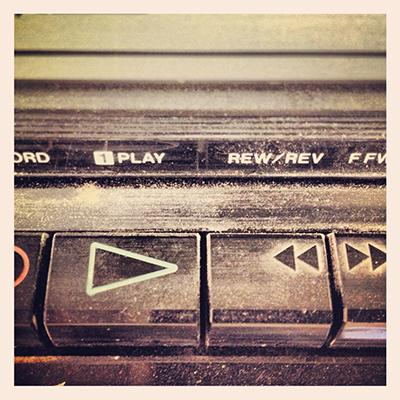
During my half-decade as a Hastings employee, the video rentals were VHS. If you wanted to take a little piece of Hollywood home for the night, you were required to physically walk the expanse of titles, examine the covers to see if you wanted to commit to the 90 minutes, and take the tape to the checkout. You could always pinpoint the date-night couples, starting in the As and slowly courting their romance through the end of the video department with hands in each other’s pockets. We usually made fun of them. Shopping for music was similar. You picked up a CD if the cover looked interesting, flipped it over, and made an aesthetic judgment on whether or not to spend 14.99. Unless you had heard it on the radio and liked it (which became increasingly uncool in the mid 90s) you typically had to make an effort to hear new music. Sometimes stores would let you hear music before you bought, but it was pretty rare. Exchanges were frowned upon. If you tried to bring back an opened CD, you were simply a disgusting human being. The point is that the store was a mega-media authority, serving up discs and tapes and box sets— and more importantly— a venue for consumption. It was the place to be and be seen. People would plop it there for hours. It was always expanding. Over a few years it had gone from a small shop to a commercial powerhouse, even occupying what was once a large grocery store. There were plenty more like it.
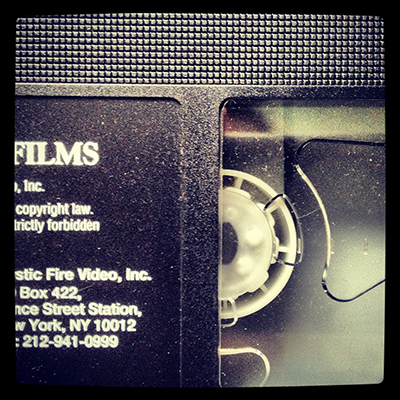 When I relocated to Austin in 1999, I worked at Borders. Another media retail powerhouse, Borders had coffee. It smelled good. Musicians would play there on weekends. The Austin culture mixed with that sweet blend of music and literature, and was reassurance that I still understood the world I wanted to live in. I worked there for six months, in which time a second Borders opened in South Austin. The storefront was alive and well. Because it’s Austin, one can’t leave out Waterloo Records, which was really the Hastings of Austin vibe-wise (except the staff were mostly jerks). Barnes & Noble was for khaki-wearing prudes, but it had a Starbucks. BookPeople, one of the last standing independent bookstores, attracted the serious and/or esoteric bibliophiles. They certainly weren’t about bestseller merchandising, and the staff actually read books. That certainly helped their authenticity. I applied for a job there once. It paid $6 an hour. Anyway, I worked at Borders. It was the friendly bohemian franchise started in Ann Arbor, Michigan. I think I got $6.75 an hour, but I could wear jeans. It was still the 90s. It was a good six months.
When I relocated to Austin in 1999, I worked at Borders. Another media retail powerhouse, Borders had coffee. It smelled good. Musicians would play there on weekends. The Austin culture mixed with that sweet blend of music and literature, and was reassurance that I still understood the world I wanted to live in. I worked there for six months, in which time a second Borders opened in South Austin. The storefront was alive and well. Because it’s Austin, one can’t leave out Waterloo Records, which was really the Hastings of Austin vibe-wise (except the staff were mostly jerks). Barnes & Noble was for khaki-wearing prudes, but it had a Starbucks. BookPeople, one of the last standing independent bookstores, attracted the serious and/or esoteric bibliophiles. They certainly weren’t about bestseller merchandising, and the staff actually read books. That certainly helped their authenticity. I applied for a job there once. It paid $6 an hour. Anyway, I worked at Borders. It was the friendly bohemian franchise started in Ann Arbor, Michigan. I think I got $6.75 an hour, but I could wear jeans. It was still the 90s. It was a good six months.
Over the next decade something happened which now seems obvious and taken for granted by most— something that was certainly the evolutionary work of many people, but also something intangible and irreversible. What triggered this little nostalgic replay was a small, otherwise routine retail transaction— a transaction that encapsulates everything I’m trying to say in this little essay.
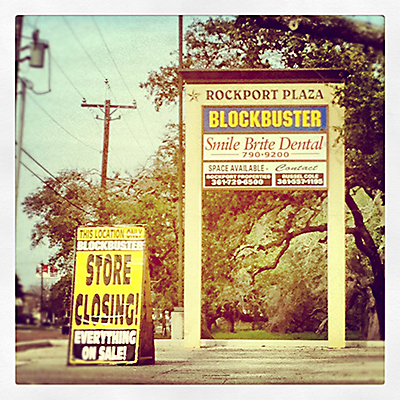
Flashback to a trip to Borders during graduate school around 2005 in Rochester, NY. I remember feeling a change in the vibe. It wasn’t just because I was in a different town, or because it wasn’t the 90s anymore. The music section felt dead. The motions of flipping through CDs felt old, even wrong. Even with the increasing efforts of Borders to set up headphone stations with gobs of music to sample, it felt too late. Something had fundamentally changed. When I moved back to Texas in 2007— visiting Austin on several occasions— I noticed the North Austin Borders was gone. I frequented the South Borders on mornings when I was leaving town. It was a good place to get a coffee, read a magazine, and go to the bathroom before I hit the road. The store had the same vibe, but there was an uneasy feeling. The music section kept getting smaller every time I visited. Even in Austin, the Live Music Capitol of the world— home of Waterloo Records— the music marketplace was beginning to fade out.
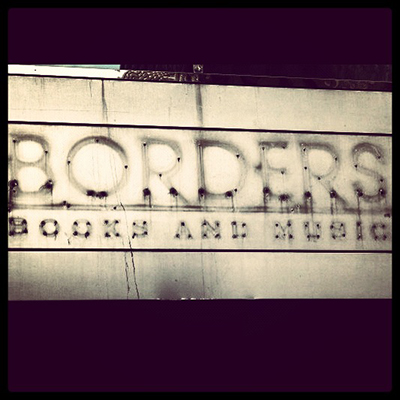
Needless to say I understood this better when I got my first iPod. No need to explain at length here, but the physicality of music was forever changed. I used to spend good money on classy shelving for my wall of CDs. It was important— people seriously judged each other by their CD collection. All of that could now literally fit in my pocket. Moreover, consuming recorded music was forever changed. No longer would it be desirable— even possible— to hang around in music stores flipping over CD cases. No longer would you be forced to pay for a full CD without liking the entire album. No longer were albums even really necessary— I mean, I remember understanding albums as “side 1” and “side 2.” This was cassette culture. CDs changed that, but the album remained a legitimate art form. Today it’s pretty rare for any of my friends to own an entire album of anything. In fact, I don’t spend much time judging the merit of albums in iTunes like I did when shopping for music in Hastings or wherever. I’ve instead reverted back to quick sampling of singles and listening to the radio (smart internet radio, that is). I mean, the point is to be listening to good music, right?
The music marketplace wasn’t the only thing changing. I won’t go into the cliché detail of how I owned my first computer, how my first high-speed internet connection opened up a new world of rediscovering just about everything, or rehash any more of the typical praise for the information age. But when I finally got the iPhone this year, I realized I possessed something ridiculously powerful— nearly every form of social and consumable media was with me at all times, but I could also actively participate. I could shoot HD video and take high resolution photographs worthy of album covers (not that those are especially necessary anymore either). This is important because I pursued the study of photography in graduate school— an expensive and pretentiously serious endeavor. Before grad school I usually felt that if only I had more equipment, I could take better pictures. This is what I refer to as photographer’s envy, and it was usually false. Then I thought my problem was that I should simply be taking my camera everywhere with me. This is photographer’s guilt, and it was true to the extent you wanted to be that kind of photographer. As I began to understand more about contemporary art, I quickly realized none of that technical shit really mattered. The wisdom at the top of the mountain was: just figure out what you need to figure out to do what you need to do. So I tried to do that. But when I got the iPhone, I could be a photographer again. I would always have my phone with me, which meant I’d always have my camera with me.
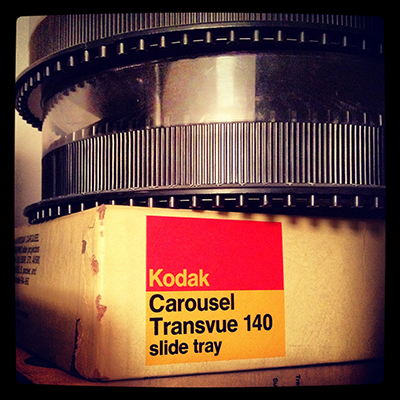
As an aside, I did have a Flip video camera once, and it worked fine. But why carry around another device with its own software? The answer— after receiving an email about Flip going out of business (and having an iPhone) was— exactly. If one device will do all of these things, why have another? Isn’t the consumer electronics industry now threatened by the same forces that drove the music store out of business? Will Best Buy be the next Hastings? Anyway, like I said, the guilt and envy melted away when I got the iPhone, and yes, it really is as cool as they say it is. Sure Android blah blah, I’m not here to argue one over the other (though my Android phone sucked).
So to review: after first confronting the mass transition of the music industry from hip storefront to iPod + iTunes, the next step in this cataclysmic personal quest was the iPhone. The anxiety of being a decent photographer no longer depended on my acquiring the latest SLR or carrying a separate video camera. The iPhone took care of that. (I promise I don’t work for Apple. Replace iPod and iPhone with Zune and Motorola Clique, I don’t care. Except Zune is long gone now, and the Motorola Clique is what I had before, and it sucked.)
The point is that now, instead of spending thousands on non-integrated products (which leads to all kinds of anxiety for creative people who can’t focus) I have one simple thing that does just about everything. Brilliant. And it works. It actually does what it claims it does. No crap video codec errors, no digy-looking cheap megapixel scams, no pre-loaded bullpoop. It actually worked. I would never again debate whether I really need a Canon Powershot to catch all those decisive moments I was missing, nor did I need a Flip video camera, nor an iPod really (which I lost on a trip to Colorado… if you find it will you please send it?).
The third step in this little self-congratulating journey of transformation was the receipt of an iPad last Christmas. When the iPad was first announced, I thought it was loony. Who needed a giant iPhone that was neither phone nor computer? I was mistaken. Once I held it and scrolled through my social media and other news feeds in Flipboard (which gathers all of these sources into one cohesive newspaper looking thing) I was hooked. Then I talked with distant relatives on Facetime. The whole family joined in. My Mom always asked me to play Scrabble when I was home for a visit. I never would. Then she got a Kindle Fire, and now we play Words With Friends all the time. Who says technology isolates us? Not to mention making music— the app store is packed with snazzy little sound engines and sequencers that I didn’t know I needed (this definitely isolates me for hours). And my Netflix streaming account works pretty darn good. I probably won’t visit a Blockbuster again, that’s for sure (notice those stores emptying out now). Oh, and iCloud? Everything is integrated— my phone/camera/music player and tablet/news magazine/gameboard/music studio/movie streamer. Again, I don’t work for Apple. But it’s pretty damn neat. And as you have probably gathered by this point— I grew up in the cusp of analog to digital so I teeter between a progressive, literate technophile and one of those apes in 2001.
The final stop in this story refers back to what I was saying about saying it all. Last Christmas, I ended up with a Hastings gift card. The gift card is a can’t-go-wrong kind of gift. I’m a creative media junkie, old and new school. I could spend up a Hastings card easily. So off I go. The San Angelo store (transformed again from its last super-megastore incarnation) now occupies a building that was once Toys R Us. I suspect they moved there to be closer to the Best Buy. Anyway, they have coffee now. It smells pretty good. I walked around a bit aimlessly. I didn’t linger in the magazines long. I quickly went to see if they had a copy of Downtown Owl which they did, but I hadn’t changed my mind about reading a Chuck Klosterman novel (I just like his streamy real stuff better, could you tell?). He has a new novel in hardback out, weighing in at about 40 pounds. I thought, “Why lug this home for $30? I bet it’s on iBooks.” I avoided the CDs and DVDs. I perused the electronic accessories. They carry some musical instruments and such now, along with several sections of “fringe,” you know— T-Shirts, games, novelty items, keychains and stuffed animals— it reminds of Spencer Gifts back in the day. In fact the whole store reminds me of just that— the past.
Long story short, Hastings is still packed with stuff. I could have bought this or that with my Hastings gift card, no problem. But I didn’t want any of it. The prime-time vibe Hastings used to have is forever gone. Both Austin Borders stores are forever gone. They are no longer the gathering places they once were, even as Hastings hangs on to an industry that has literally left the building in many cases. As I started to head out disappointed and empty-handed, a rack of shiny gift cards caught my eye. When I saw them, I knew what to do. I took my $25 Hastings gift card out of my pocket and bought a $25 iTunes gift card. For a minute I didn’t know if I was allowed to do that. It felt as if I was trying to get away with something. I left the store feeling both relieved and compelled to note how that simple transaction represented one of the most significant techno-cultural transformations ever. When I got home, I picked up my iPad, bought the ad-free Words With Friends, downloaded a song by Washed Out that I discovered by watching Portlandia on Netflix, upgraded my little music studio and composed a track that I posted to SoundCloud. As of this writing I still have about $10 left on it. I’ll probably buy another one of those apps that makes my photographs look like Kodachrome slide transfers from the 70s. Too bad Kodak didn’t think that one through.
________________
John Aäsp is currently Visual Arts Director at Rockport Center for the Arts on the Gulf Coast of Texas, where he also serves as Managing Director of the Rockport Film Festival. He received his MFA from RIT in 2006. Other than writing, making video art and electro-beepy music, John can’t stop making excuses for his cats and his love for motorsports. @johnaasp, johnaasp.blogspot.com, beachblanketblammo.com



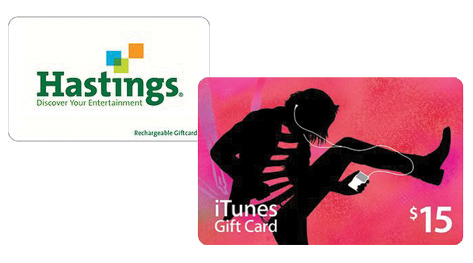

2 comments
I’ve been going to Hastings since before I can remember. We still have Hastings here in Albuquerque NM!! I still buy cds and Vinyl and I’ve never owned an IPad or iPod. I’m extremely tech savvy if I do say so and I’m currently typing on my Kindle Fire. Namaste
I loved stores like Barnes and Noble and Borders. “Loved” is appropriate to use in regards to Barnes and Noble, a still living, breathing megastore. You can see their dwindling book selection being progressively taken over by toys and candy. But maybe book and movie and music megastores are a fantasy, who would want to read some obscure book or see some obscure movie in the backwoods of the US? Do people mostly ignore the philosophy section at Barnes and Noble and heads right to the “serial murderer” section?